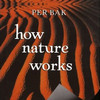Self-organized systems
I looked up Per Bak on Wikipedia and was intrigued by his theories, but I put it aside as not particularly relevant to me at that time. Currently I am writing a book chapter on risks in Virtual Enterprise Networks (VENs), as described by Ken Thompson in The Networked Enterprise and it was as a background for VENs that Per Bak’s sandpile model came into my mind again. A VEN is a collection of loosely coupled businesses, self-organized and more efficient than traditional businesses, and it’s the self-organizing concept that I needed to understand more about. How nature works provided me with that understanding. Chapter 11 on economics was particularly helpful here. Actually, every economist should read that chapter. It has certainly widened my horizon.
Amazon.com
amazon.com: How Nature Works
Reference
Koubatis, A., & Schönberger, J. Y. (2005). Risk management of complex critical systems. International Journal of Critical Infrastructures, 1(2/3), 195-215.
